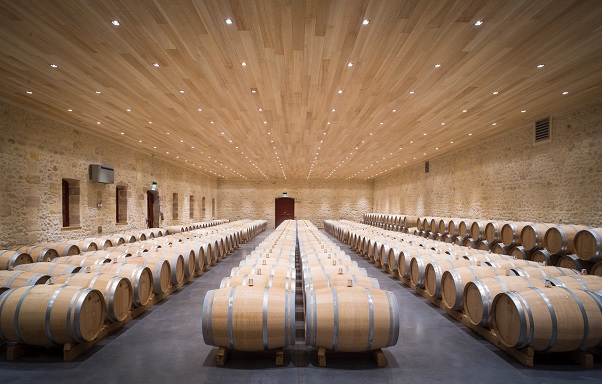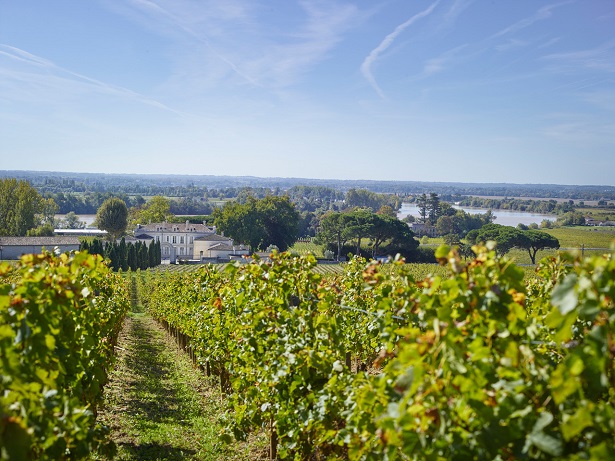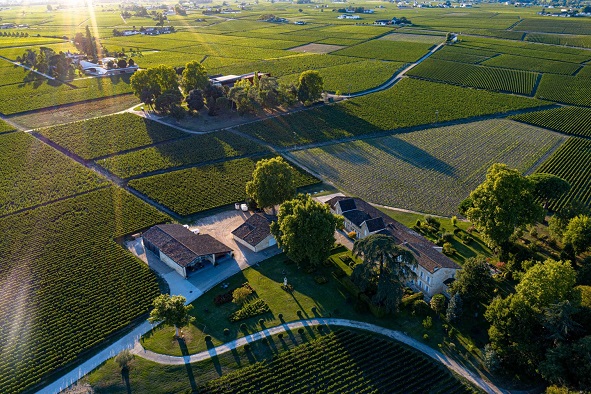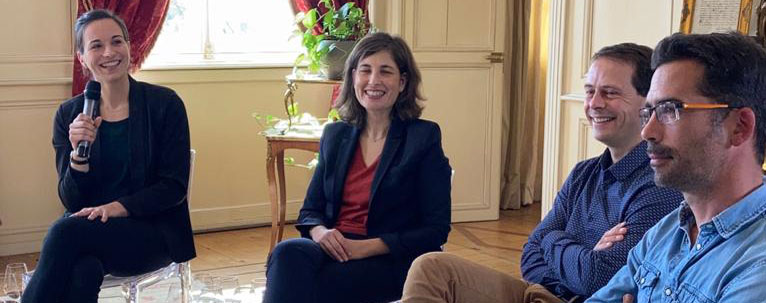Olivier Decelle, owner of Saint-Emilion Grand Cru Classé Château Jean Faure, is one of a growing number of wine producers in Bordeaux who have noticed life returning to their vineyards after switching to organic and biodynamic viticulture.
The region has nearly 800 certified organic producers and more than 60 biodynamic producers, according to the CIVB, and the number is steadily growing. More than 13% of the vineyards are now organic, up from 11% in 2019 (the average for France is 14%).
Agricultural consultant David Pernet of Sovivins, who works with many Bordeaux producers who want to convert to more sustainable methods, thinks this number will continue to grow over the coming years, despite “two big challenges”. Firstly, he said: “Bordeaux experiences very wet springs and some of the wettest conditions in France, so it’s not the easiest place to be organic. This is a real challenge and we have to be honest about that.
“Cost is also an issue – in order to be able to afford to be organic you have to sell your wines at a certain price, as organic wines are more expensive to produce.”
Speaking during a webinar on organic and biodynamic practices in Bordeaux, he added: “Some wineries in the region price their wines too low to be able to be organic. For the region to grow its organic area, the cost of the wines will be key.”
During the webinar, Eloi Jacob, managing director of Château Fourcas Hosten, explained the attraction: “Being organic helps us to extract the full potential from our vineyard.”
The goal, he said, is “to bring back life in the soil”, stimulate biodiversity, create “a living landscape”, preserve the 50ha estate for future generations, and express the full potential of its two terroirs (the clay-limestone soil in Listrac and the Pyrenean gravel on the Fourcas plateau).
Eloi also revealed one of the surprising results of the switch to organic and biodynamic farming: it’s a useful tool in the battle against rising alcohol levels in the region (a result of global warming).
“Maturity in organic and biodynamic arrives earlier, from one week to ten days before,” he stated. “One week (later) means you can have one degree of alcohol more.”

Château Fourcas Hosten (above), a historic winery in the heart of Listrac-Médoc, started its conversion to organic in 2017, releasing its first certified whites in 2020. The estate is due to release its first organic certified reds this year. It began the conversion to biodynamic farming with 16ha in 2018 and aims to go fully biodynamic shortly to “reduce the amount of copper and sulphur”, which are allowed under organic farming rules.
Projects at Château Fourcas Hosten, which dates from 1810 and has been owned by brothers Laurent and Renaud Momméja since 2006, include:
- Soil studies and mapping for optimal matching of soil to grape variety;
- A vast replanting programme, which will continue until 2025, concentrating Merlot and the white grapes on the clay-limestone soil in Listrac, while the Cabernet Sauvignon and the recently planted Petit Verdot are better suited to the Pyrenean gravel on the Fourcas plateau;
- Enrichment of fallow plots with green manure every year for four years before planting;
- Increasing competition between the new red plantings by having 10,000 vines per hectare (up from the previous 8,333 vines per hectare);
- Grassing between the rows;
- Spraying with herbal teas, such as yarrow, nettle, horsetail, camomile, and comfrey, to stimulate the vines’ natural defences;
- Sowing barley in the inter-row on 18ha of Cabernet Sauvignon – to improve soil structure and add to biodiversity;
- Fertilising with sheep manure (Ovinalp) and cow manure (Bochevo);
- Tillage in the Fourcas plateau vineyards, and mowing in Listrac;
- Planting of 1,200 metres of hedges (maple, dogwood, hawthorn, hazelnut) along the borders of plots, to stimulate biodiversity and to prevent spray drift;
- Installing a weather station in the middle of the vineyard in July 2018 to better understand and work with the climate;
- Ploughing under the vines to avoid chemical weed control and encourage deeper root systems;
- Removing all products with CMR classification (carcinogenic, mutagenic or toxic for reproduction);
- Leaf thinning and bud removal by hand in 70% of the vineyards (to help prevent diseases);
- Adopting organic pest control methods (bacteria, trichoderma, pheromones, sulphur, etc);
- Using three small knapsack sprayers to apply biodynamic preparations (cow dung, silica, etc) manually;
- Bringing in a flock of ewes in February 2021 to live amongst the vines and provide natural weed control. This eco-grazing activity will be the focus of a study during this trial year, which will look at the impact of reduction in machine use and improvement of the soil’s natural porosity through the action of the ewe’s feet and their excretions. Changes in the biodiversity of the vineyard and in the wellbeing of the human team through contact with the animals will also be analysed.

Château de La Dauphine (above), which moved from organic to biodynamic viticulture in 2015, is considering using sheep from this autumn. In the first of what is expected to become an annual event, 200 sheep and their shepherds will arrive direct from Béarn in the Pyrenees mountains to take up residence for six months among the 53ha of vines on the slopes of Fronsac. This activity, known as transhumance, will be studied and measured to deduce the reduction in the estate’s carbon footprint.
La Dauphine has embraced biodynamic methods since the Labrune family, who made their fortune in the health sector, took over the estate in 2015.
“The biodynamic approach, with its emphasis on life and everything being inter-related, seemed obvious to us,” vineyard manager Yannick Yaunet said. “Since we have started applying it, we have seen a significant improvement in the soil, the vines and, of course, in the wine.”
Steps to restore biodiversity at the historic estate include:
- Introducing beehives;
- Enriching the site with low walls (home to wasps which prey on moths), ditches and ponds (which add aquatic life);
- Boosting flora and fauna – which are “important for good health and harmony of vineyard”;
- Protecting the soil with less tractor use (less mowing, fewer treatments – especially copper and sulphur).
- Installing bat roosts as bats like to eat grapevine moths (whose larvae feed on grapes);
- Using natural products to protect the vines and enrich the soil;
- Making the biodynamic preparations according to the lunar calendar, in order to respect the natural rhythm of the growth cycle;
- Light ploughing of soil under the vines and grassing between the rows;
- Using copper buckets;
- Planting hedges – which act “like a bridge between the different plots to attract bugs and animals”.

Biodiversity is one of the prime objectives at Château Jean Faure (above), too.
Olivier Decelle, who bought the Saint-Emilion estate with wife Anne in 2004, attributes the return of the songbirds to increased biodiversity.
The 18ha estate has more than 100 vegetal species – vines, trees, plants, and vegetables – and more than 60 animals which contribute to the estate’s overall balance and are an “effective means to fight against illnesses”.
The château started the conversion to organic in 2014, becoming certified in 2017, and began biodynamic farming in 2020.
The first step was to stop the use of chemical inputs, replacing them with “whitewash, herbal tea brews, essential oils and orange peel to burn the mildew,” according to vineyard manager Daniel Duclos. He explained these “are natural recipes reinforcing the plant’s immune defences”.
Bordeaux-born agricultural engineer and winemaker Marie Laure Latorre, who took over as managing director in 2018, also praticipated in the webinar.
She summed up the historic estate’s current philosophy this way: “If you want good grapes, you need healthy vines and if you want to increase the quality and the availability of the nutrients, you need living soil.”
Measures taken at Château Jean Faure include:
- Resuming mechanical tilling;
- Leaving the grass to grow “to regulate vine vigour”;
- Implementing precise pruning procedures which reduce green harvesting – “very traumatic for the vines”;
- Re-introducing historic species such as apple and apricot trees that had disappeared from the area around Saint-Emilion;
- Sowing cereal and legumes to help soil structure;
- Using “the life in the soil as a fertiliser”, so they don’t need to add more fertiliser;
- Keeping everything “in relation to the environment, in harmony with the rhythm of the seasons, the lunar calendar and the presence of local fauna”.













.png)






